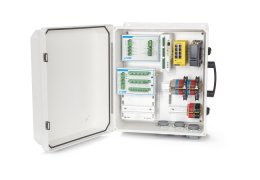Printable PDF: Installing the CNR4 Net Radiometer in Biomet Systems
(Installing-CNR4-12670.pdf)
Download this content as a pdf that can be saved to your computer or printed.
The Kipp & Zonen CNR4 Net Radiometer (part number 7900-144) measures incoming (downwelling) and reflected (upwelling) radiation in two spectral bands. The CNR4 is supported by the Premium package and Packages 2 and 4. Read the manufacturer's instructions before using the CNR4.
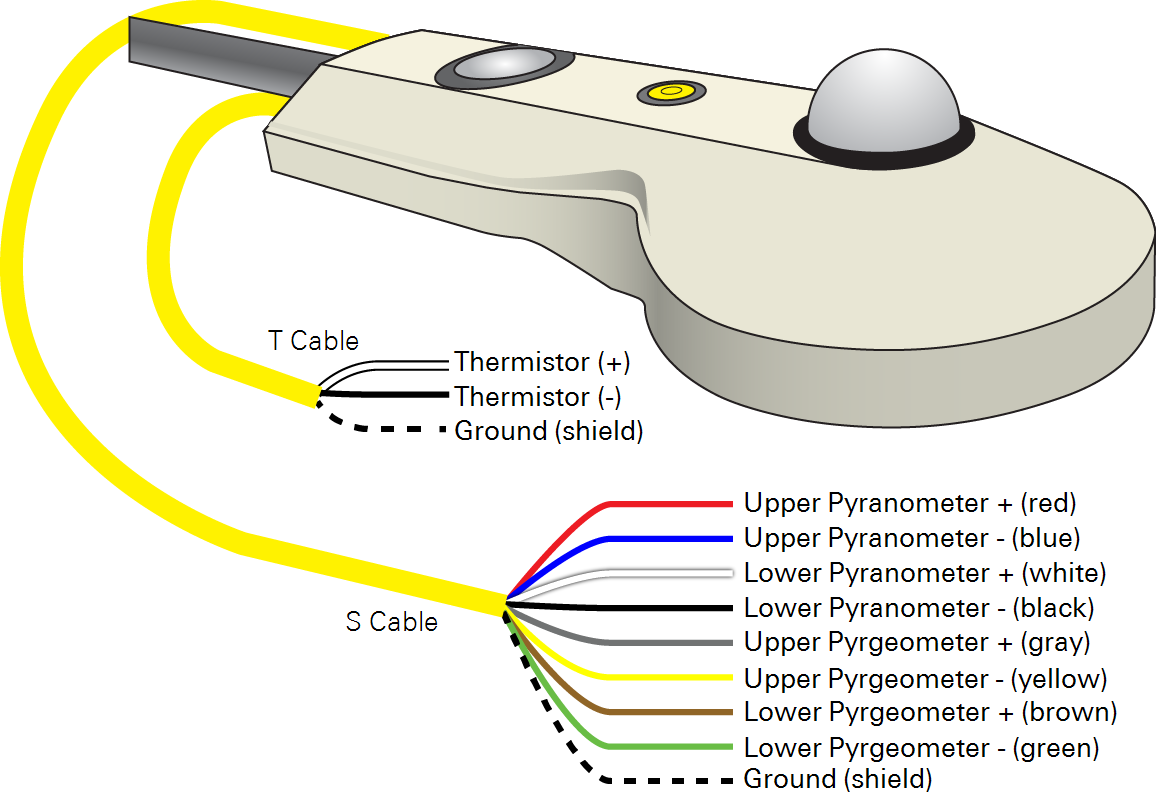
| CNR4 Specifications: | |
|---|---|
| Spectral Range (total): | ~300 to 92000 nm |
| Pyranometer: | 300 to 3000 nm |
| Pyrgeometer: | 4500 to 92000 nm |
| Energy range (upper pyranometer): | 0 to 1000 W/m2 |
| Energy range (lower pyranometer): | 0 to 400 W/m2 |
| Pyrgeometer: | 300 to 500 W/m2 |
| Response time: | <20 s @ 63% |
| Nominal sensitivity: | 10 μV/Wm2 |
| Directional error: | <3% up to 60° |
| Sensor asymmetry: | <15% |
| Operating temperature range: | -30 to +70 °C |
| Cable lengths: | 10, 25, and 50 meters |
Siting the net radiometer
Install the net radiometer so its view is unobstructed by adjacent structures, trees, and the meteorological station. Select a location that is away from heat sources.
Orient the sensor with the sensing element pointing toward the equator to minimize shading from surrounding elements. Mount the sensor at least 1.5 m above the plant canopy.
Mounting the net radiometer
The CNR4 mounts to the 7900-350 light sensor bracket, which can be affixed to a horizontal cross arm. There are two mounting positions for the net radiometer:
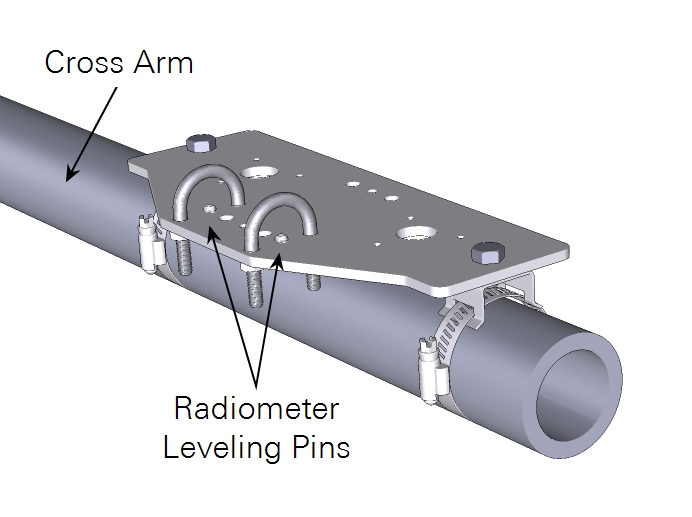
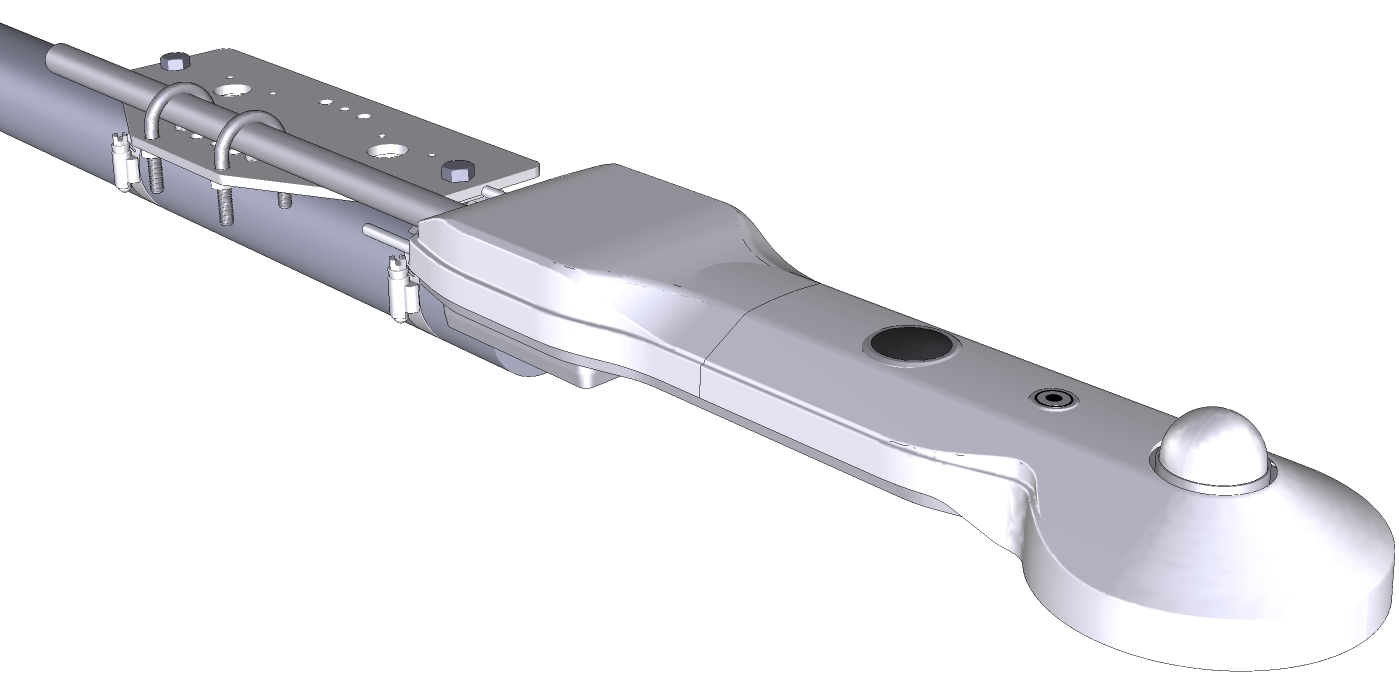
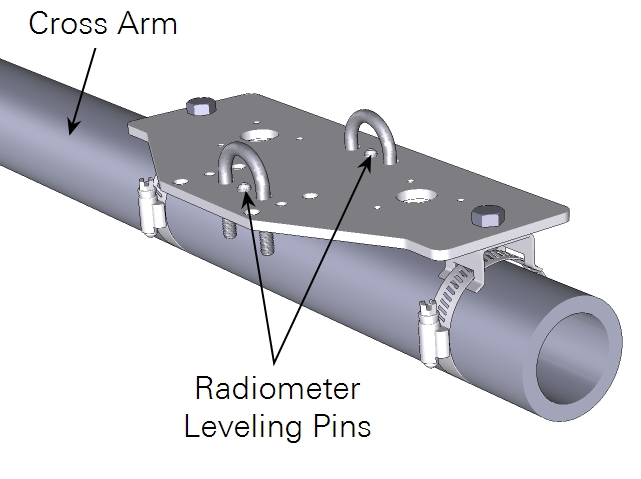
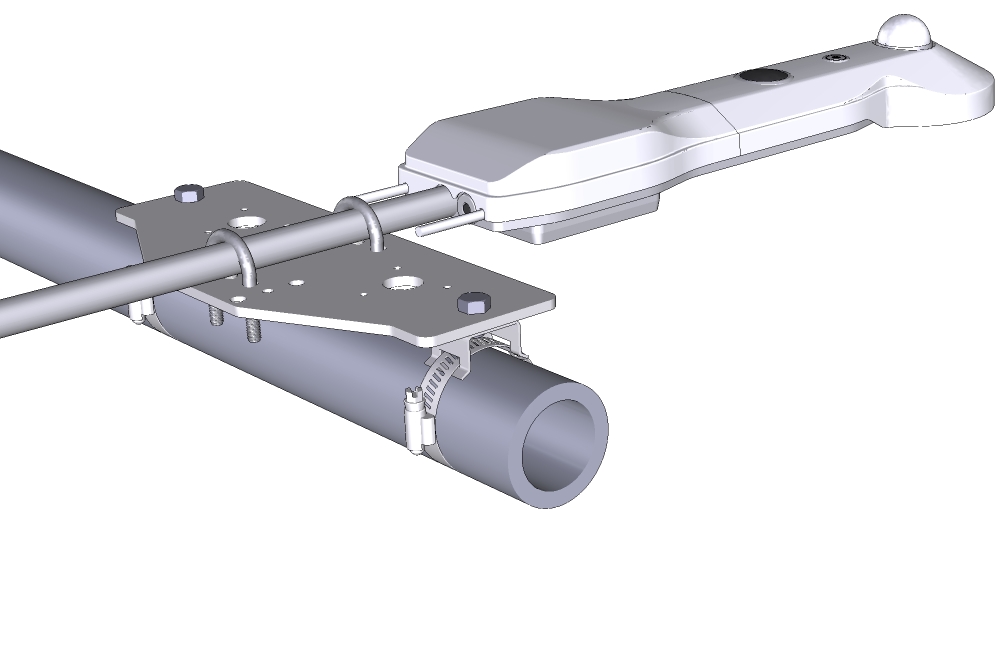
Attach the mounting brackets and band clamps to the plate. Tighten the band clamps around the cross arm. Attach the U-bolts to secure the radiometer shaft. Rotate the radiometer as needed and adjust the leveling pins to level the sensor. Tighten nuts to secure the U-bolts.
Wiring the net radiometer
The CNR4 is supported by programs 2 and 4. The radiometer cable (9 leads) connects to the Radiometer S connector. The temperature sensor cable (7 leads) connects to the Radiometer T connector.
| Cable | Description | Color | Terminal |
|---|---|---|---|
| S Cable | Signal 1 + | Red | A7 |
| Signal 1 - | Blue | A8 | |
| Signal 2 + | White | A9 | |
| Signal 2 - | Black | A10 | |
| Shield | Black | G6 | |
| Signal 3 + | Gray | A11 | |
| Signal 3 - | Yellow | A12 | |
| Signal 4 + | Brown | A13 | |
| Signal 4 - | Green | A14 | |
| T Cable | Shield | Clear | G7 |
| Signal | White | A15 | |
| Signal Ground | Black | G8 | |
| Not Used | Gray, Green, Yellow, Brown | n/a |
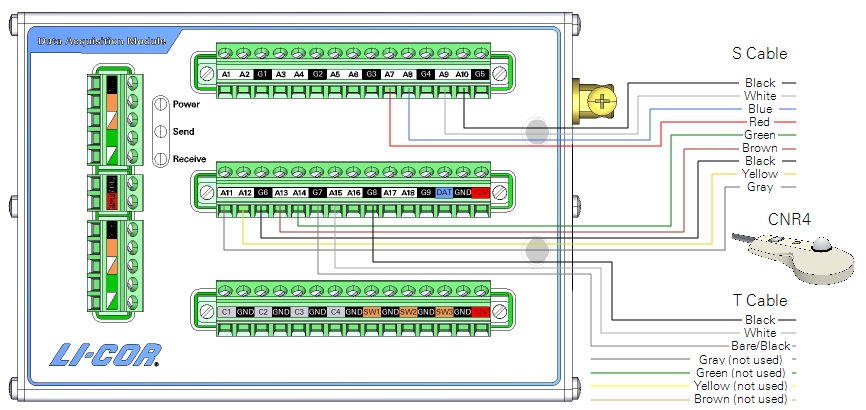
Entering the calibration constants
The calibration factors are printed on the cable label. They are also provided on two calibration certificates included with the CNR4 Net Radiometer. First, confirm that the serial number on the sensor corresponds with the serial number on the calibration certificates. One certificate is for the long wave detector, the other is for the short wave detector. Each calibration certificate gives two sensitivity values—one for the upper sensor and one for the lower sensor.
| Calibration Sheet | Calibration Certificate Label (sensitivity) | Label in Blueprint Utility |
|---|---|---|
| Long Wave Detector | UPPER SENSOR | LWIN_SENS |
| LOWER SENSOR | LWOUT_SENS | |
| Short Wave Detector | UPPER SENSOR | SWIN_SENS |
| LOWER SENSOR | SWOUT_SENS |
The calibration factors (sensitivity), which are in units of μV/W m-2, should be entered directly into the Blueprint Utility.
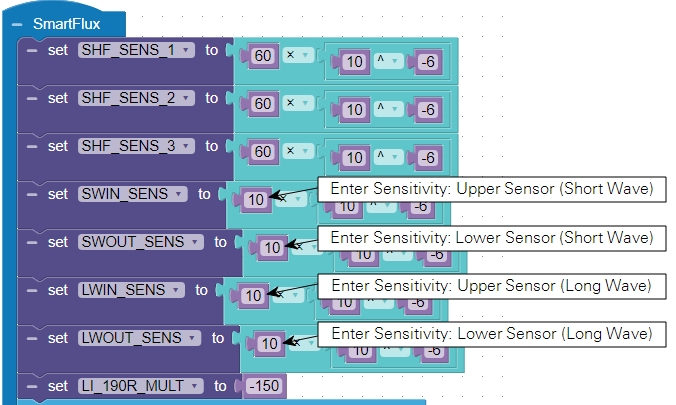
Save the configuration and push the file to the data acquisition system after entering the remaining calibration information.
Retrieving data
The SmartFlux System will log these data in compressed files for processing by EddyPro Software and evaluation by Tovi Software. Data are stored on the USB drive on the SmartFlux System. Refer to the Data Acquisition System instruction manual for details.
Maintenance
Keep the domes and windows free of snow, dust, and debris. Clean the domes periodically with alcohol or water and mild detergent. Check periodically to be sure the instrument is level. Replace the drying cartridge every 2 months. Recalibrate every 2 years according to the manufacturer's instructions.
Important note about expected values: To correct for the long-wave emissions from the sensor body, a correction based on temperature of the sensor body is incorporated into the long-wave output from the instrument before data are recorded in the datalogger.
